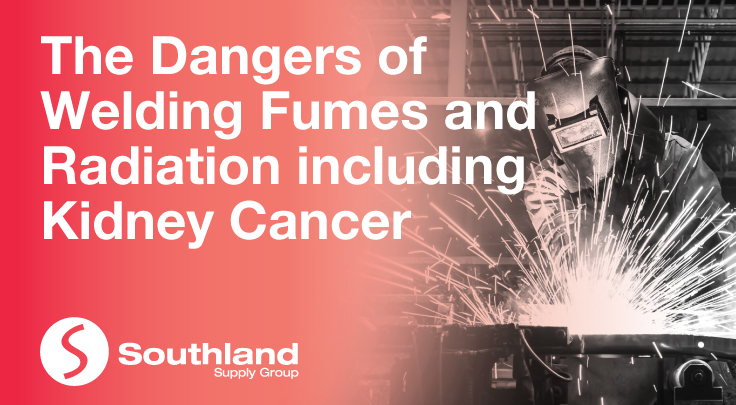
Exposure to welding fumes, without proper safety measures in place, has been linked to many health issues, including cancer. Ultraviolet (UV) radiation from welding can also cause melanoma.
In 2017, the International Agency for Research on Cancer conducted research and released new scientific evidence showing that exposure to mild steel welding fumes can cause lung cancer, and possibly kidney cancer, in humans.
What makes welding fumes dangerous?
The fumes created when welding is made up of solid particulates that range from 10 nanometers to 20 microns in size, which are formed when metallic vapors condense. These fumes are often respirable and can penetrate deep into the lungs, where it can do significant harm and may also spread into the bloodstream.
A more serious affliction from welding fumes is metal fume fever, which is caused by beryllium, zinc and manganese. This may result in damages to the central nervous system. Fluorides often used in electrode coatings can cause irritation of the eyes, nose and throat, and long-term exposure can even result in bone and joint problems, and a chronic excess of fluid in the lungs.
What worsens the risk of exposure is that welding requires the welder to have their head close to the site, which results in a breathing zone close to the point of fume generation. Unless there is sufficient fume capture in place, the welder will be exposed to a high concentration of hazardous fumes, especially if the worker is not wearing the right welding ppe, such as welding helmets, welding gloves and safety glasses.
How to reduce health risks of welding fume?
To prevent exposure to fumes and UV radiation, you should:
- Read the safety instructions by your manufacturer, safety procedures at work and safety data sheets to avoid dangers of welding gases.
- Weld in ventilated isolation booths.
- Use substitute materials such as water-based cleaners or high flash point solvents.
- Use engineering controls to capture and remove fumes, gases and vapors such as downdraft booths and on-tool extraction guns.
- Locate welding operations away from other workers (eg use screens, curtains, or distance from other work stations, aisles, or walkways).
- Clean base metals to reduce fume generation such as oils, greases, mill scale, and solvents.
- Encourage job rotation and/or job sharing.
- Use the right Welding PPE such as respiratory protection and a welding helmet with the correct side shields and filter. While for other workers nearby, it is also recommended to wear protection such as safety glasses with UV protective side shields).
- Train workers in the correct fit, use and maintenance of PPE.
- Do regular air monitoring.
Whatever materials you’re working with, Southland can help you by providing the right Personal Protective Equipment to use. If you’re still not sure of how to protect yourself and your workmates from welding fumes, contact Southland Supply Group today for a wide range of protective products.
